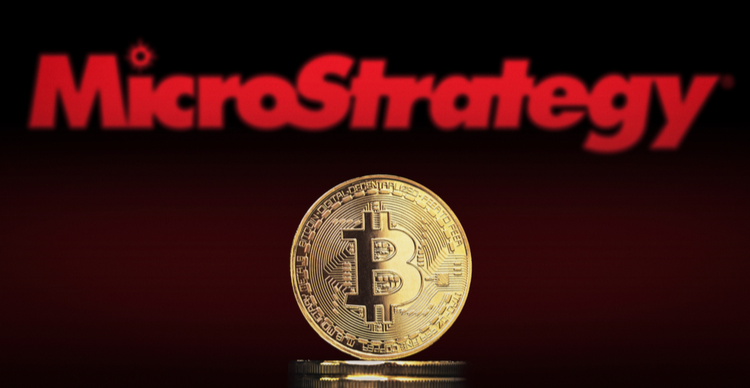How correlated is MicroStrategy stock to the Bitcoin price?

Kay Takeaways
1 in every 127 Bitcoins are owned by MicroStrategy
The stock price tracks the price of Bitcoin remarkably well
Despite price correlation, there are additional risks to the stock, while it violates the “not your keys, not your coins” mantra
For investors unable to purchase Bitcoin directly, however, it does provide an alternative means of Bitcoin exposure
With 0.79% of the circulating supply owned by the company, it also throws up concern about a centralisation of wealth
Google “MicroStrategy” and Wikipedia will tell you that it is “an American company that provides business intelligence, mobile software, and cloud-based services”.That may technically be true, but in reality it has become a Bitcoin investment vehicle.
MicroStrategy, under the borderline-religious leadership of Michael Saylor, currently owns 152,800 Bitcoin. That is 0.79% of the circulating supply; in other words, 1 in every 127 Bitcoin is now owned by MicroStrategy. When omitting the portion of the Bitcoin supply which is lost (for which estimates generally come in at about 1.5 million), the company owns 1 in every 118 coins.
What’s more, since MicroStrategy’s first Bitcoin purchase on August 8th, 2020, there have been just over one million coins created. This means MicroStrategy’s stash equates to 15.3% of the total coins created since they started buying.
Clearly, no matter what way you swing it, MicroStrategy own an enormous stash of Bitcoin. Here, we will assess how it affects their stock price.
In July, @MicroStrategy acquired an additional 467 BTC for $14.4 million and now holds 152,800 BTC. Please join us at 5pm ET as we discuss our Q2 2023 financial results and answer questions about the outlook for #BusinessIntelligence and #Bitcoin. $MSTR https://t.co/SCHeBJ80TH
— Michael Saylor⚡️ (@saylor) August 1, 2023
Performance vs Bitcoin
The place to start is, unsurprisingly, MicroStrategy’s correlation with the Bitcoin price. On the next chart, we can see that the correlation has picked up markedly since the company began buying up the supply. Bar a brief dip in August last year, the relationship has been extremely strong since late 2021.
This is not surprising when one looks at the numbers. MicroStrategy has averaged $497 million of revenue over the last three years, with an average EBITDA of $50 million. And yet these numbers are dwarfed by its Bitcoin supplies – it owns approximately $4 billion worth of Bitcoin at the time of writing, purchased for $4.53 billion.
The market cap of the company is only marginally more than the value of its Bitcoin, coming in at $4.7 billion.
If we plot the performance of the company against the performance of Bitcoin since the first purchase in August 2020, both assets have trodden an extremely similar path.
There are currently 11.834 million shares of MicroStrategy outstanding. With the company holding 152,800 Bitcoin, that implies that each share equates to owning 0.0129 Bitcoin. With the current share price of $329, this means that a $1000 investment in MicroStrategy nets you 0.0392 Bitcoin.
In contrast, a $1000 investment in Bitcoin directly at the market price of $26,100 would net you 0.0383 Bitcoin.
Obviously, this is simplistic and looks beyond a whole host of variables on the MicroStrategy side (not to mention the extreme volatility of both assets). Bitcoin enthusiasts will also decry the fact that purchasing MicroStrategy stock is nowhere near the same thing as buying and holding your own Bitcoin – “not your keys, not your coins”.
And they would be absolutely correct. These are completely different investment vehicles. However, with no spot Bitcoin ETF currently approved in the US, many institutions and other large entities have difficulty investing in the cryptocurrency for regulatory and compliance reasons. If an institution seeks exposure to Bitcoin, therefore, it is often required to pursue alternative options.
MicroStrategy may not be the real thing, and carries plenty of risks which direct purchases of Bitcoin do not. However, in terms of price exposure alone, it is a viable backup option.
Companies that are locked out of purchasing Bitcoin for the aforementioned reasons, but gained exposure through MicroStrategy, have benefitted well. The next chart plots its performance against the Nasdaq – it displays similar outperformance to what we have seen from Bitcoin over the time period.
Centralisation
While this is all well and good, it would be remiss not to mention the fact that there do exist downsides here for the Bitcoin ecosystem. Sure, offering exposure to investors who, at least over the last couple of years, have not been in a position to purchase Bitcoin directly is a good thing.
On the flipside, however, this is an asset built upon the principles of decentralisation. We are now in a position where one company owns an enormous chink of the supply, and does not seem as if it will curtail its buying anytime soon, as its stash creeps close and closer to 1%.
Speaking of 1%, most of the world’s wealth is already in the hands of the top 1%. While Bitcoin often paints a romantic image of a democratisation of wealth, and a means of pulling oneself out of financial tyranny, the reality is that there will also be a 1% who own a massive slice of the pie. It will be no different to any other asset in this regard.
We put out a piece in March assessing the wealth breakdown of Bitcoin, mentioning a study by the National Bureau of Economic Research outlining that the top 10,000 Bitcoin investors control one-third of the total supply.
The anonymous Satoshi Nakamoto owns an estimated 1 million coins alone (or as a group, depending on what you believe regarding his/her/their identity), equivalent to over 5% of the supply. Nakamoto’s large holdings were even mentioned in Coinbase’s S-1 filing when it went public in 2021 as a source of risk to the business.
“The identification of Satoshi Nakamoto, the pseudonymous person or persons who developed Bitcoin, or the transfer of Satoshi’s Bitcoins” was outlined as a risk to Bitcoin and, by extension, Coinbase’s business.
While speculating on Nakamoto’s identity is a fool’s game, and these coins could easily be lost forever, it is easy to see how Coinbase listed this as a risk in its filing. The fact is that one entity or person holds 5.2% of the supply, and nobody has any idea who.
We know who MicroStrategy are, and Michael Saylor is often lauded in the space for being a visionary (not to mention the fact the tidal wave of buying pressure serves to help boost the price now and again). But for an asset built upon the concept of decentralisation, it does provide pause for thought.
Having said that, Bitcoin does remain the closest thing to decentralisation that the world has right now in the monetary sphere, even if it is not perfect. There will always be a 1%, because that is how life works – and Bitcoin is no different in this regard.













